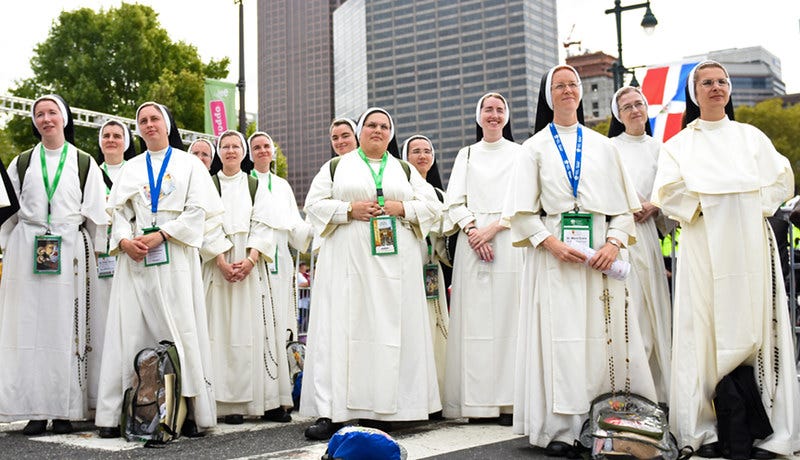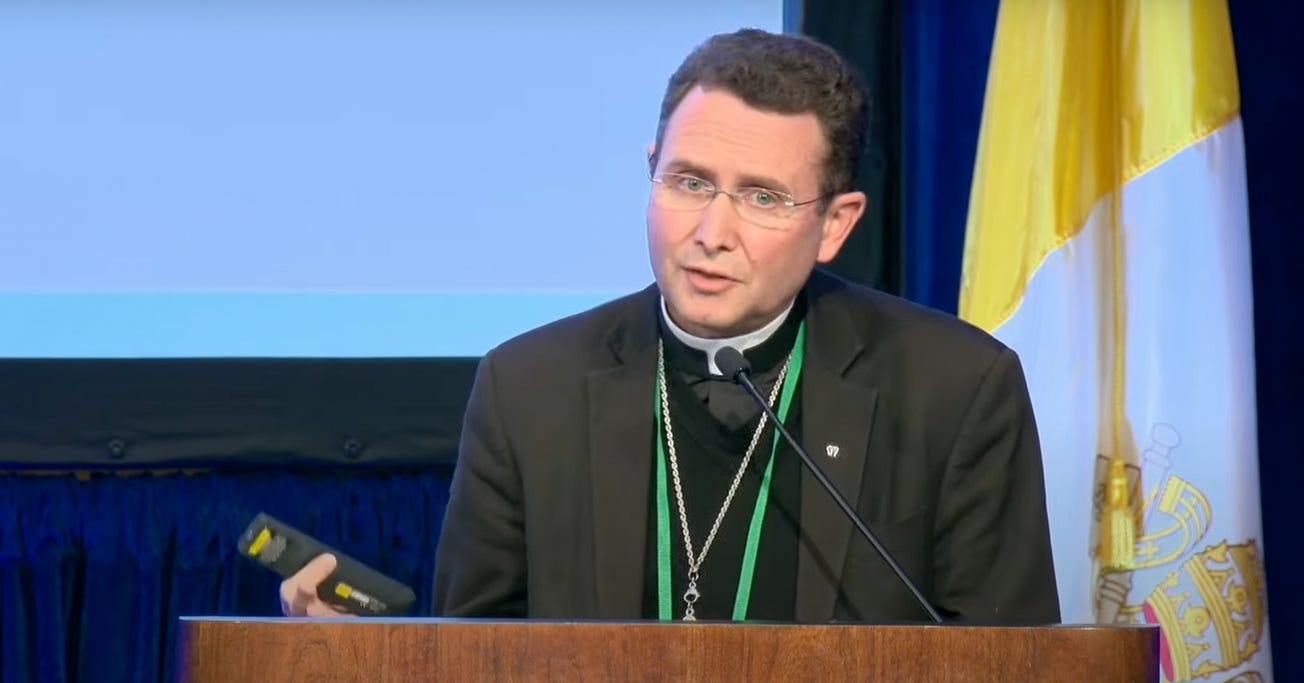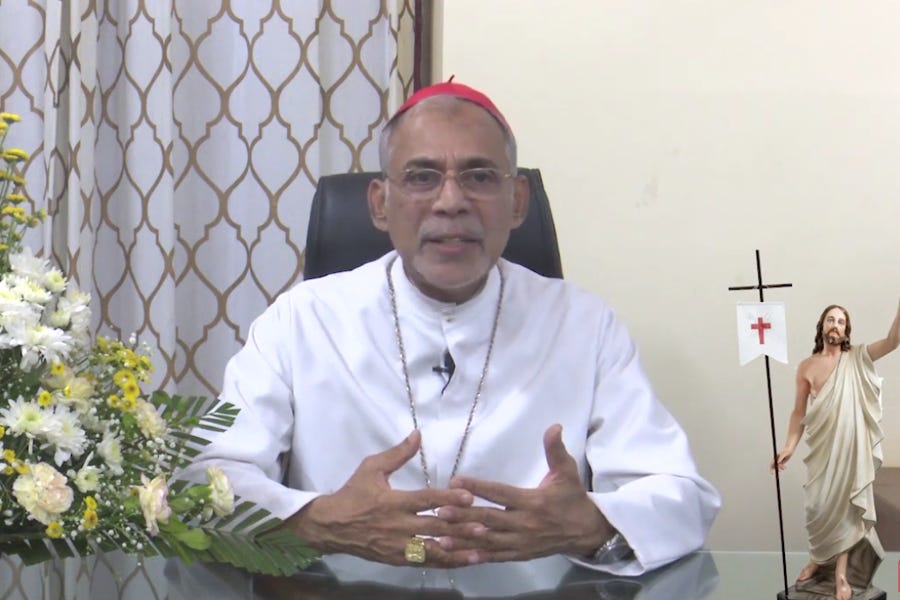Sister Mary Bendyna, OP is executive director of the Council of Major Superiors of Women Religious, an association of the leadership of 112 U.S. religious communities, representing 5,700 religious sisters.
A member of the Dominican Sisters of St. Cecilia, in Nashville, Tennessee, Sr. Bendyna holds a Ph.D. in government from Georgetown University. She worked for 12 years as a researcher, and eventually as executive director, at the Center of Applied Research in the Apostolate.

Sr. Bendyna talked with The Pillar about religious life in the U.S., and its future.
The Pillar: Sister, today many practicing Catholics have very limited experience of religious life — perhaps they recall religious sisters in school, or they’ve seen them on TV, but otherwise, they don’t know much about who religious are, or what they do, or why women enter religious life. And often people think about religious sisters, or religious life, in terms of what religious do, instead of who they are.
What’s really at the heart of religious life?
Most fundamental to our identity as religious sisters is our relationship to Jesus Christ. We make religious vows to follow him in a particular way of life.
Pope John Paul II, during his papacy, reminded us about the essential elements of religious life. In addition to our vows, the profession of the evangelical counsels of poverty, chastity, and obedience, these include community life, personal and communal prayer, and, for apostolic communities, participation in the mission of Christ through our apostolates. I think these really are the essentials of our life.
I’d like to quote one of my favorite canons, canon 663: “The first and foremost duty of all religious is to be the contemplation of divine things and assiduous union with God in prayer.”
So prayer is the first thing. If it’s not first and foremost, well, then we run into some difficulties.
In terms of “being vs. doing,” in apostolic communities, there is an apostolic dimension to our life that flows out from the life of prayer.
For every community, there needs a certain balance between the “being” and the “doing,” and that is especially important for apostolic religious communities, which often were founded to do a particular work. It is important for communities to be careful not to place the emphasis entirely on what they do rather than on who they are. Thinking about that is one of the points the Second Vatican Council made about the renewal of religious life.
What kind of renewal did Vatican II call for in religious life?
There was a point at which so much emphasis in religious life ended up being placed on the externals, on habits, for example. Some things got a little out of control. So, during and even before Vatican II, there was a call for simplifying some of those things, simplifying some of the customs and practices that had developed in communities which ended up being more of the focus than the most essential things about religious life.
So part of it really was dealing with externals. Now the Church did not say to get rid of all the externals either, but to adapt them to the changing circumstances of the time. More importantly, the Church asked religious to go back to the essentials, to go back to their founding charism, to ask: “What was the gift given to that founder or foundress, that is lived out in the life of the community?”
What is happening now in religious life in the U.S., with regard to the number of religious? And in the world?
There has been an overall decline in the number of sisters, more so in the U.S., in Western Europe, and Australia. The patterns are a bit different in Asia and Africa. But overall in the West, there's been a significant decline.
Now some will say that what we had in the mid-1960s in terms of the number of religious was an anomaly, and that explains why numbers now are declining. I don't think that's entirely the case. There certainly was a huge uptick in numbers at that time. But the decline in numbers is still continuing. Many communities have had few, if any, vocations since that time, although there are some exceptions to that.
Are there common characteristics among communities that see growth in vocations?
I spent some time researching this when I worked at CARA, the Center for Applied Research in the Apostolate. Some of the data surprised me.
We did see some things in common among communities experiencing growth: common prayer, common life, even a common apostolate, which is not an essential part of religious life but can be important. If sisters are in the same apostolate, they have a common set of experiences and an easier time scheduling time together.
There is something about being together. And I think this last year has shown us just how important being together is, because that has been limited.
It is the practice in my community that everybody comes home, at least for some time in the summer, and everybody comes home at Christmas and then as they can during the year. [This year] we have really missed each other.
And even here at our motherhouse, where we typically have about 150 sisters who live here during the year, when we had more social distancing and could not all be with each other, that was hard. So, I think it made us more conscious of the importance of actually being together.
We have things like Zoom and other kinds of social media to keep in touch with each other, but nothing can replace actually being with each other.
Is there a particular background which many women entering life today have in common? Particular experiences of formation or family life? There has been media reporting in recent months suggesting that some women enter religious life looking for stability in an unstable world. Do you think that is accurate?
I think sisters come from all kinds of backgrounds. I think our own sisters are probably a little bit more likely than most to have had a more traditional family life. But it’s not that some of them haven't had experiences of broken families or divorce in their families.
But quite a few of our sisters come from practicing Catholic families. But some of them are also converts. So they come from all kinds of backgrounds. But I would not want to encourage the myth that young women are coming to communities that are more traditional because they're looking for security or safety, or for what was lacking in their own upbringing. Because I don't think that's accurate.
There is an idea, though, that some young people are looking for religious life because they want stability or tradition that they won’t experience in the world.
Yes, that is what some people think, that people [entering religious life] can't handle the difficulties of the world or they're trying to make up for bad experiences in their own family. There may be some who come for that reason, but I think they will likely not stay for that reason.
Fundamentally people come into religious life because they feel called by God to do so. And you're not going to last if that's really not why you're here. So if you're looking for something else you probably won't find it for very long in religious life. If you come just for community or just because you were lacking something in family life, I think that's not going to work.
What is the future of religious life in the U.S? What will be different?
Based on current patterns, the numbers of religious sisters are likely to diminish pretty significantly. So I think at least for the foreseeable future there will be a relatively smaller number of sisters.
As to what religious sisters will be doing, our CMSWR communities do all kinds of things: Some are in schools, some are in health care, several of our communities have senior facilities or homes, like the Little Sisters of the Poor or the Hawthorne Dominicans.
And then there are a lot of newer communities who see evangelization as their apostolate. So they are out in parishes or on campuses doing all kinds of work as part of the “new evangelization.” And then we have communities in direct service with the poor, like the Missionaries of Charity.
There is a caution in many of our communities about becoming too professionalized. Teachers and health care workers and others need to be certified and have the appropriate credentials. But we have to be careful, as Pope Francis keeps reminding us, not to become too focused on professionalism or an orientation toward careerism.
If a “career” begins to take the priority over who you are as a religious, then you can lose that balance that a sister and a community needs. There are a lot of demands [on our time] and so things are built into the life to help maintain a balance.
And particularly the prayer part of our life [is essential to that]. So at the center of religious life, if it’s going to be fruitful and thrive, is that interior life of prayer, for the community and for the individual. That’s essential.




